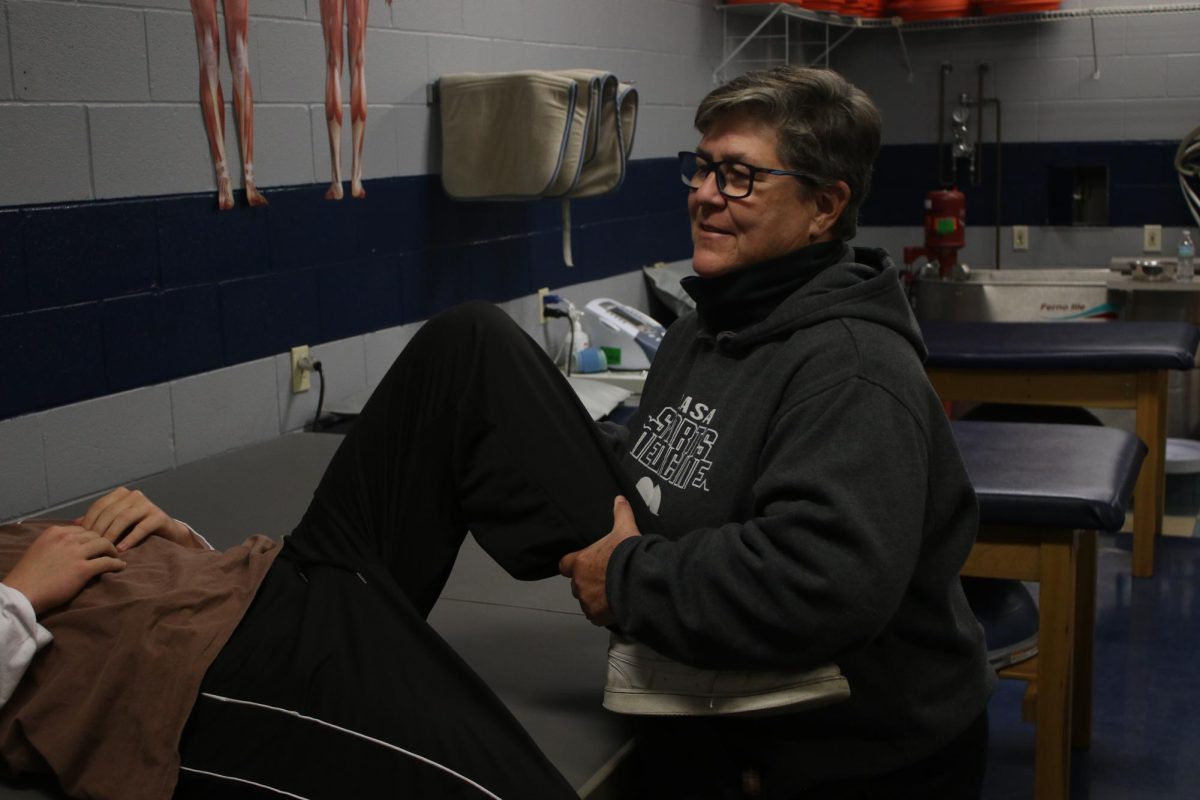Sue Torres, the athletic trainer at LASA known to students as “Doc”, has acted as a catalyst for students’ medical careers since originally hired at LBJ-LASA in 2008. Her love of teaching encouraged her to branch out from athletics and create LASA’s Sports Med program, offering students a unique opportunity that combines traditional classroom learning with real world medical practice. Next year, Torres will be retiring and leaving Texas for Colorado, leaving behind a legacy of service and commitment to LASA athletics.
When LBJ and LASA split in 2021, she opted to stay with the LASA students instead of working with LBJ’s more acclaimed sports program. For Torres, the decision was not about which program was more established, but rather which student body was more enthusiastic about the Sports Med program.
“LBJ was a lot more competitive athletically– basketball made it all the way to the final championship game,” Torres said. “So it came down between going with the athletics or going with the students, and I chose the students because you all are so easy to teach. It’s fun, and I’m teaching future doctors, I’m teaching future physical trainers.”
Abby Aardema, a senior in Sports Med III, agreed that the spirit of the class does not have to leave with Torres. However, she emphasized that the spirit of the class set by Torres will stay even with a new teacher.
“I think Calvin is going to do a really great job of making sure everything is the same,” Aardema said. “Torres has always been good about going in depth and providing experiences. I think that will stay.”
After taking Torres’ class, Aardema solidified her choice to go into a career in physical therapy. The Sports Med class allows her to take her education outside the classroom by interning at a clinic and taking external courses.
“Right now I’m working through this online class for the shoulder and how to treat it,” Aardema said. “It’s very in-depth and honestly basically insane, and then on Wednesdays I get to go off campus to a physical therapy clinic… Honestly, the community is just really awesome, and the athletic trainers are so willing to help us learn.”
Junior Aadhya Chagarlamudi is in Sports Med II and credits Torres with shaping her ambition to enter the medical field. Chagarlamudi’s first encounter with the class was during her brother’s football game in eighth grade, where she noticed Torres and her students on the sidelines. Interested, she started learning from Torres as a freshman during football practices. She progressed quickly from there, being cleared to wrap athlete’s bandages the next year, and is now on track for an internship.
“I think [Torres] definitely made me realize that medicine is for sure what I want to do, and that I want to help people in that way,” Chagarlamudi said. “She’s had so much medical experience herself. I hope that it’ll keep the same atmosphere of being free and hands-on, and not just lecture based, that it is also clinical based, and we still get to do as much as we can helping the teams and clinical practices.”
Torres’ own journey into athletic training began in high school when one of her friends got injured during a practice. When she explained the situation to her dad, he suggested taking the friend to the school’s athletic trainer. She had no idea who that was, or what they did, but after sitting in on the checkup Torres began to take an interest in the career. Torres planned to enlist in the Army as a medic until a college recruiter suggested she go to college instead. She began pursuing a degree in zoology with a concentration in athletic training at Eastern Illinois. After, she ended up going back to the Army as a Medical Service Corps Major, then worked as a patient administrator for 24 years.
“I went to Eastern Illinois, and athletic training wasn’t a major, it was a concentration, you had to major in something else,” Torres said. “So everyone was doing PE with an athletic trainer concentration, and I got into that and I did not like the PE aspect. I had to take a modern dance class–it just wasn’t for me. So I chose zoology instead because it met a lot of the athletic trainer prerequisites. But, before I graduated, athletic training became a major, so I double majored in that and zoology.”
The Sports Med class is separated into three levels, beginning with Sports Med I which introduces the basics of athletic training, including how to identify common injuries and understanding the anatomy involved, along with some units focusing on the legal and psychological aspect. The second level builds off this knowledge, concentrating on the actual healing process as opposed to the diagnosis. By Sports Med III, the program is primarily self directed, allowing students to choose their own emphasis in medicine and giving opportunities based on that.
“The class is a win-win situation,” Torres said. “I can help these guys get started on their medical careers, but they also help me, they’re an extension of me.”







